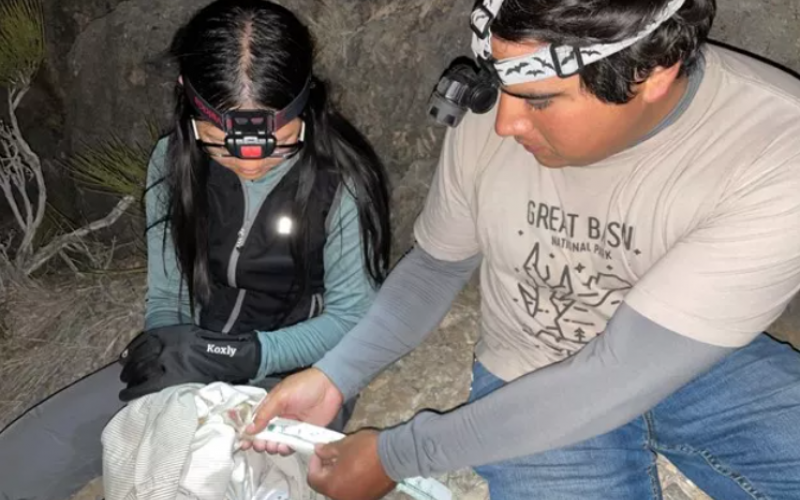The Midden: Understanding Woodrat Distribution

This article is the first in a series of posts showcasing articles published in the Summer 2023 issue of “The Midden”, Great Basin National Park’s semiannual resource management newsletter. The series will introduce you to some of the issues, projects, and management strategies currently happening in Great Basin National Park.
Where do woodrats live in Great Basin National Park? What do they eat? Researchers from the University of Nevada - Reno work to answer these and other questions and find some interesting results.
Understanding Woodrat Distribution
By Alexandra Coconis and Marjorie Matocq, Researchers, University of Nevada, Reno
We are working to identify the causes and consequences of niche partitioning between two woodrat species, whose ranges overlap in Great Basin National Park. In other words, we would like to know why woodrats live where they do, and what resources they need to sustain their populations. To help answer these questions, we are combining field sampling and lab work at University of Nevada-Reno (UNR) to identify where woodrats live and what they eat.
During last summer’s field season, our research group surveyed along elevational gradients in Great Basin National Park. We searched for the presence of two woodrat species – Desert Woodrat (Neotoma lepida) and Bushy-tailed Woodrat (Neotoma cinerea). We used live traps to capture woodrats. Once trapped, we can gently handle the woodrats to measure them, identify if they are male or female, and whether they are very young or already an adult. We collect a small piece of their ear to provide a DNA sample and fecal pellets which allows us to measure what they are eating (from the DNA of the plants in their poop!). Finally, we ear-tag the woodrat with a unique number (looks like an earring), so that we know who they are if we catch them again.
Within the Park we captured a total of 64 individuals from the months of April-September. In Snake Creek Canyon, we captured both species of woodrats at most of our sites, thereby establishing that the species actually co-occur in many areas in the Park. This is a surprising result given that at most locations throughout the Great Basin, these species have not been found to occur together.
In addition, we conducted plant surveys using line-point intercept and belt transects at 130 sites where we captured a woodrat. These will be used to understand what vegetation woodrats choose to build their nests near and which plants they choose to eat, among those that are available.
In addition to the data collection, we collaborated with researchers from the Natural History Museum of Utah to talk with the public about collections-based small mammal research in the Park. Several tables of study skins and skeletons and field equipment were displayed for three hours on Saturday, August 13 at the Lehman Caves Visitor Center.
We plan to continue our fieldwork in 2023, trapping additional locations. We will also measure internal and external nest temperatures throughout the season as thermal properties are likely an important aspect of where woodrats choose to build their nests.
Photo: Two woodrat researchers weigh a bag containing a woodrat. Ally Coconis
